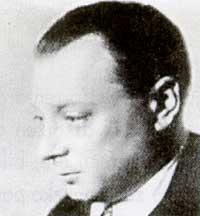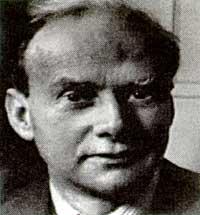Pauli, Wolgang
1995/08/02 Azkune Mendia, Iñaki - Elhuyar Fundazioa | Kaltzada, Pili - Elhuyar Zientziaren Komunikazioa
(1900-1958)
Austro-American physicist born in Vienna in 1900. From a young age he went to science and at the age of 21 he received his doctorate from the University of Munich. He got to know the theories of Bohr, his student at the University of Copenhagen. From there he moved to Hamburg, where he was professor in 1923.

He was a student when he published a 200-page report on the theory of relativity. He took charge of the energy charge of electrons and exposed the different hypotheses in numerous journals. In 1925 he enunciated the principle of exclusion that bears his name, that is, the principle that in an atom there cannot be two electrons with four equal quantum numbers. Among scientists, Pauli's discovery aroused great controversy and until he received the Nobel Prize in Physics in 1945 he did not completely calm down. In any case, Pauli's principle was an unbeatable tool for scientists who were engaged in the research of the outer electrons of atoms, as some of the discoveries announced later proved.
Although the Nobel Prize came a little late, Pauli continued to investigate. In the 1920s he dealt with the neutrino hypothesis. Until then there was an intense debate about the so-called rapid simple electrons or beta emitted by radioactive bodies. For many, the emission of these beta particles questioned the principle of energy conservation, as a part of energy was considered to be lost. Pauli said that this loss did not occur, broadening the neutrino hypothesis. This involves the release of elemental particles without load or mass along with beta particles and, although it could not be detected, the search was carried out. Fermi baptized this possible particle with the name of neutrino and had to wait until 1956 to confirm Pauli's theory.
By then Pauli was a U.S. citizen and worked as a professor at Princenton University. He spent the last years of his life in the Swiss city of Zurich, where he also found death in 1958.

Gai honi buruzko eduki gehiago
Elhuyarrek garatutako teknologia





